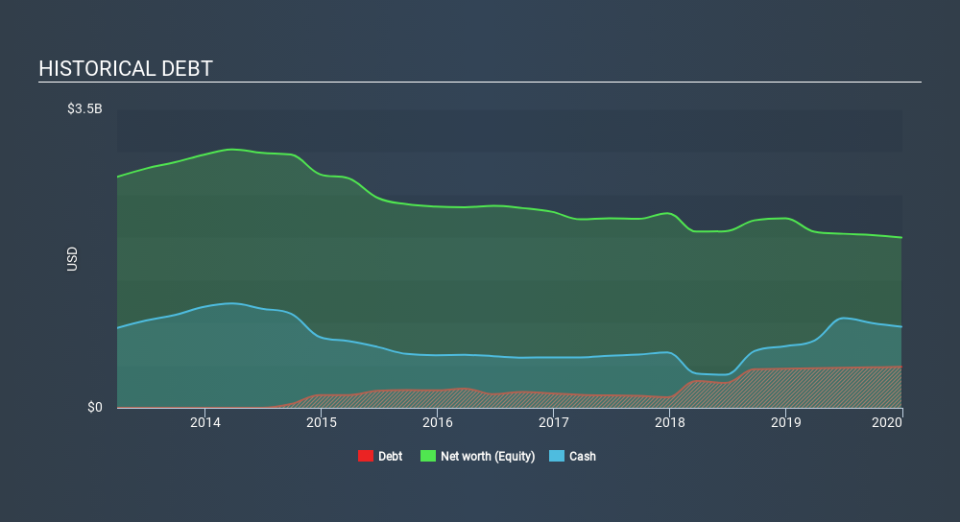Is Cree (NASDAQ:CREE) Using Debt In A Risky Way?

David Iben put it well when he said, 'Volatility is not a risk we care about. What we care about is avoiding the permanent loss of capital. So it might be obvious that you need to consider debt, when you think about how risky any given stock is, because too much debt can sink a company. Importantly, Cree, Inc. (NASDAQ:CREE) does carry debt. But is this debt a concern to shareholders?
Why Does Debt Bring Risk?
Generally speaking, debt only becomes a real problem when a company can't easily pay it off, either by raising capital or with its own cash flow. Ultimately, if the company can't fulfill its legal obligations to repay debt, shareholders could walk away with nothing. While that is not too common, we often do see indebted companies permanently diluting shareholders because lenders force them to raise capital at a distressed price. Of course, plenty of companies use debt to fund growth, without any negative consequences. The first thing to do when considering how much debt a business uses is to look at its cash and debt together.
See our latest analysis for Cree
What Is Cree's Debt?
The image below, which you can click on for greater detail, shows that at December 2019 Cree had debt of US$480.5m, up from US$458.0m in one year. However, it does have US$951.5m in cash offsetting this, leading to net cash of US$471.0m.
A Look At Cree's Liabilities
Zooming in on the latest balance sheet data, we can see that Cree had liabilities of US$248.5m due within 12 months and liabilities of US$537.8m due beyond that. Offsetting these obligations, it had cash of US$951.5m as well as receivables valued at US$138.3m due within 12 months. So it actually has US$303.5m more liquid assets than total liabilities.
This surplus suggests that Cree has a conservative balance sheet, and could probably eliminate its debt without much difficulty. Succinctly put, Cree boasts net cash, so it's fair to say it does not have a heavy debt load! When analysing debt levels, the balance sheet is the obvious place to start. But it is future earnings, more than anything, that will determine Cree's ability to maintain a healthy balance sheet going forward. So if you want to see what the professionals think, you might find this free report on analyst profit forecasts to be interesting.
In the last year Cree had negative earnings before interest and tax, and actually shrunk its revenue by 3.4%, to US$1.0b. That's not what we would hope to see.
So How Risky Is Cree?
Statistically speaking companies that lose money are riskier than those that make money. And the fact is that over the last twelve months Cree lost money at the earnings before interest and tax (EBIT) line. Indeed, in that time it burnt through US$128m of cash and made a loss of US$148m. But the saving grace is the US$471.0m on the balance sheet. That means it could keep spending at its current rate for more than two years. Even though its balance sheet seems sufficiently liquid, debt always makes us a little nervous if a company doesn't produce free cash flow regularly. The balance sheet is clearly the area to focus on when you are analysing debt. However, not all investment risk resides within the balance sheet - far from it. Consider risks, for instance. Every company has them, and we've spotted 2 warning signs for Cree you should know about.
At the end of the day, it's often better to focus on companies that are free from net debt. You can access our special list of such companies (all with a track record of profit growth). It's free.
If you spot an error that warrants correction, please contact the editor at editorial-team@simplywallst.com. This article by Simply Wall St is general in nature. It does not constitute a recommendation to buy or sell any stock, and does not take account of your objectives, or your financial situation. Simply Wall St has no position in the stocks mentioned.
We aim to bring you long-term focused research analysis driven by fundamental data. Note that our analysis may not factor in the latest price-sensitive company announcements or qualitative material. Thank you for reading.

 Yahoo Finance
Yahoo Finance 
